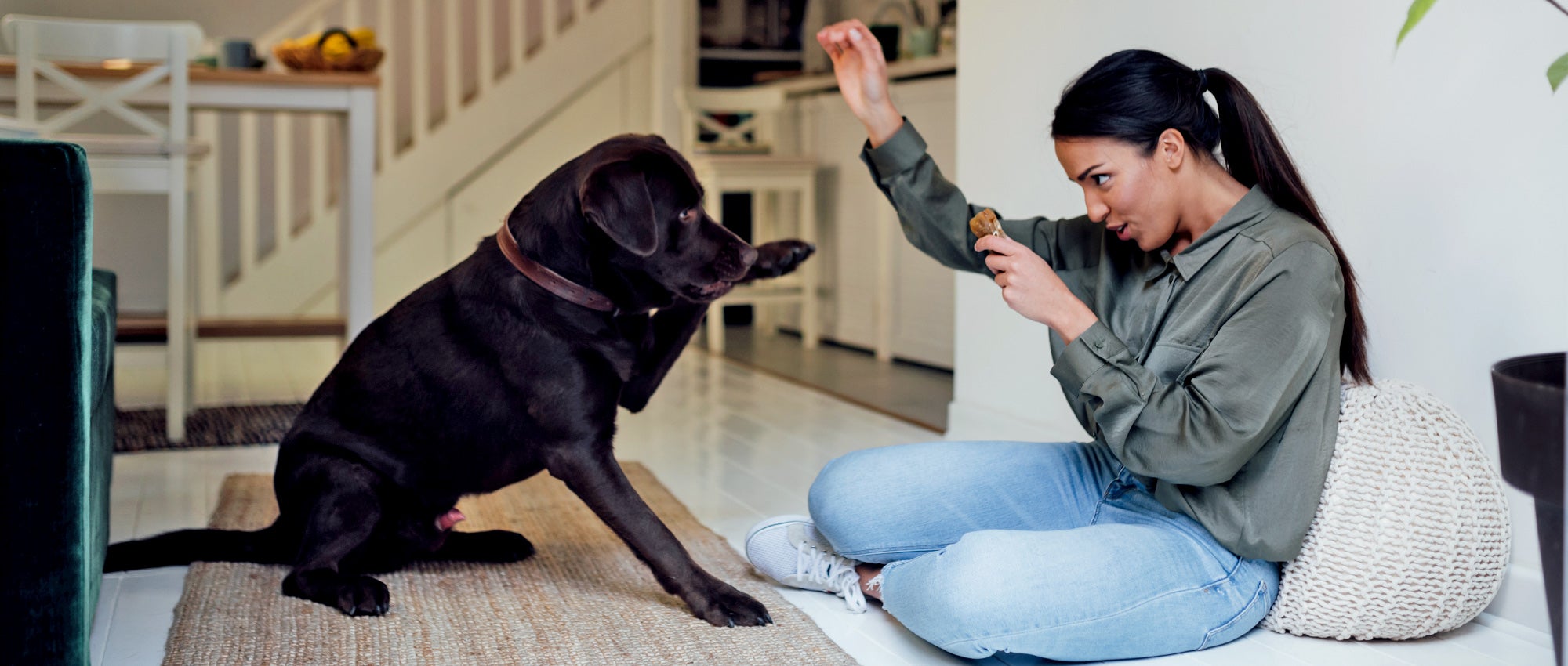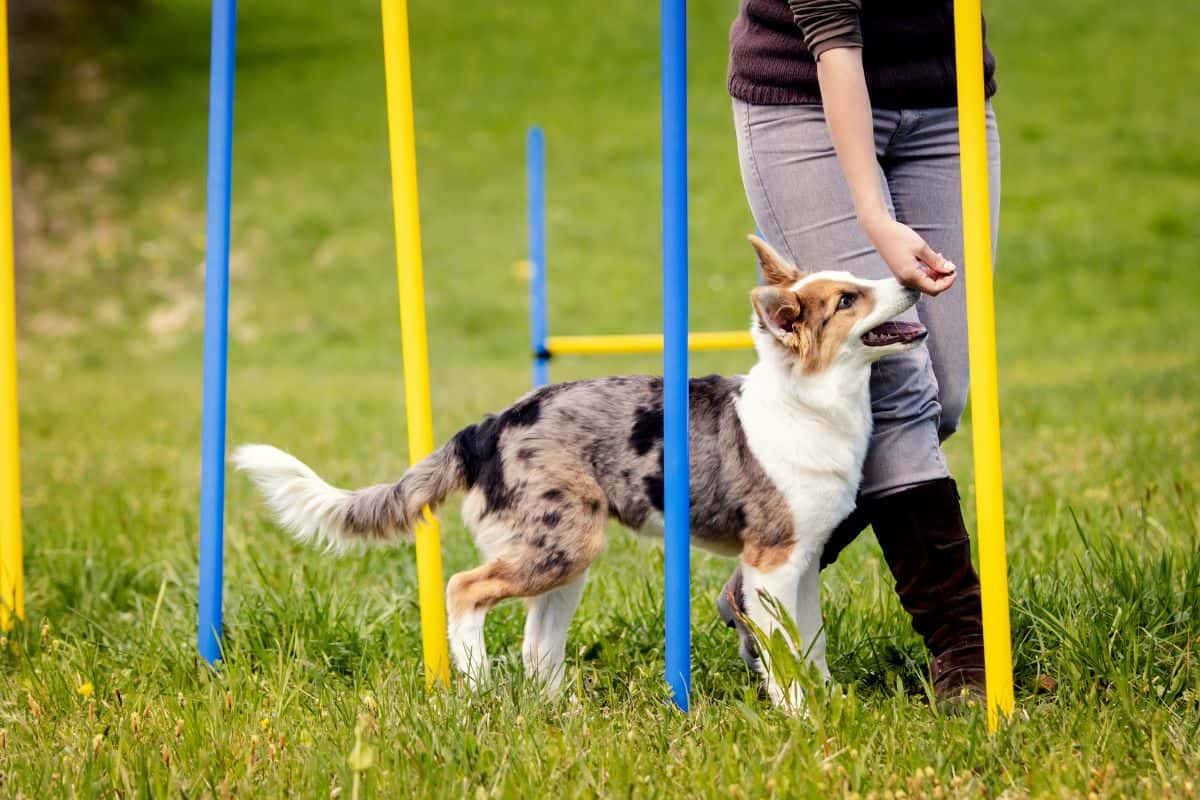Essential Tips for Effective Dog Training: An Overview for Pet Dog Owners
Efficient pet dog training is a complex process that needs a tactical technique customized to both the pet's personality and the owner's objectives. Comprehending exactly how to navigate these challenges can dramatically enhance the training experience, ultimately changing the relationship in between proprietor and pet dog.
Comprehending Dog Behavior
Comprehending pet dog behavior is important for reliable training and cultivating an unified partnership in between dogs and their proprietors. dog training. Dogs interact largely through body language, vocalizations, and activities, making it crucial for proprietors to translate these signals precisely.

Socialization plays a substantial role in canine behavior; direct exposure to numerous environments, individuals, and other pets can substantially affect a pet dog's temperament. Additionally, factors such as type attributes and individual temperament should lead training approaches, as some breeds might have details behavior attributes that necessitate customized techniques. By comprehending these aspects, owners can produce a helpful environment that encourages positive actions, leading to successful training outcomes and a much deeper bond with their animals.
Developing Regular Commands
Efficient interaction with your dog begins with developing consistent commands. This foundational component of training is crucial for promoting understanding in between you and your family pet. Consistency in the commands you make use of ensures that your canine can accurately connect specific words or phrases with the preferred actions.
When choosing commands, choose clear, unique words that are simple to set apart and claim from each other. Avoid utilizing similar-sounding commands that may perplex your pet dog. As an example, making use of "sit" and "stay" is proper, yet "rest" and "hit" might bring about misconceptions.
Furthermore, keep the same tone and volume for every command. Dogs are sensitive to singing hints, so varying your tone can develop confusion.
It is just as essential to ensure that all family members are on the exact same web page concerning the commands made use of. A united front in command use will protect against combined signals and enhance the discovering process.
Favorable Reinforcement Techniques
The power of favorable reinforcement in pet dog training hinges on its capability to urge desired actions through incentives and praise. This strategy is grounded in the concept that habits adhered to by desirable results are most likely to be repeated. By integrating favorable reinforcement right into your training routine, you can effectively shape your pet's actions in a useful fashion.
To execute favorable reinforcement, it's vital to recognize what motivates your canine, whether it be treats, toys, or spoken praise. When your dog executes a wanted activity, such as remaining on command, right away reward them with a reward or love. This association in between the command and the positive result reinforces their understanding.
It's crucial to timing the rewards properly; supplying the support within secs of the preferred habits helps your canine make the connection (dog training). In addition, consistency is crucial-- ensure that all member of the family use the very same commands and reward systems to stay clear of confusion

Progressively, you can reduce the regularity of treats as your dog discovers the habits, transitioning to praise or periodic benefits. This technique not only promotes a solid bond between you and your pet however likewise promotes a Click This Link positive learning environment, making educating a satisfying experience for both.
Socialization and Communication
Regularly revealing your pet dog to a range of environments, individuals, and other pets is vital for their social growth. Socialization must start early, preferably during the crucial home window of 3 to 14 weeks, when pups are most receptive to brand-new experiences. Older canines can additionally profit from continuous socialization initiatives.
Introduce your canine to various settings, such as parks, pet-friendly shops, and city areas. This direct exposure assists them adjust to numerous stimulations, minimizing anxiousness and anxiety feedbacks. Motivate positive interactions with various other dogs and people, guaranteeing that these experiences are secure and controlled to cultivate self-confidence.
Make use of structured playdates with genteel pet dogs, as this can enhance your canine's social skills and instruct them proper actions. Obedience classes and training sessions also give superb possibilities for socializing, enabling your pet to connect with others in a supervised atmosphere.
Display your pet dog's body movement throughout communications, as this will certainly aid you determine their convenience level. Slowly enhance direct exposure to more tough circumstances while guaranteeing that each experience is favorable. A well-socialized canine is most likely to show balanced actions, making them a happiness to have in any kind of setup.
Resolving Common Training Obstacles
Every pet dog owner will certainly run into training difficulties at some point, regardless of their pet's age or socializing degree. Identifying usual problems such as stubbornness, interruptions, and fearfulness can assist in developing efficient methods for improvement.

Disturbances during training sessions can hinder focus. To combat this, start training in a peaceful atmosphere with marginal stimuli. Gradually introduce interruptions as the pet dog becomes more skillful in commands. Short, frequent training sessions are likewise effective in maintaining focus.
Terror can prevent a pet's knowing process. Gradual desensitization to the resource of concern, coupled with favorable reinforcement, can help these details alleviate anxiousness. Patience is crucial; never force a pet into a circumstance that causes distress, as this may worsen the problem.
Ultimately, understanding and addressing these usual difficulties with a structured strategy will promote a more effective training experience, reinforcing the bond in between dog and owner while advertising reliable understanding.
Verdict
In recap, effective dog training depends on a comprehensive understanding of canine behavior, the establishment of consistent commands, and the application of favorable support techniques. Socializing plays an essential role in developing well-adjusted family pets, while attending to typical training obstacles needs patience and versatility. By implementing these necessary methods, pet proprietors can foster a solid bond with their pet dogs and advertise preferable habits, inevitably bring about a harmonious connection between humans and their canine friends.
Understanding pet dog behavior is necessary for effective training and fostering a harmonious connection in between pooches and visit this website their owners.Socializing plays a substantial duty in pet actions; exposure to different environments, individuals, and various other pets can dramatically impact a pet's personality.The power of positive reinforcement in dog training exists in its capacity to motivate wanted actions through rewards and appreciation. By integrating positive reinforcement right into your training regimen, you can successfully shape your pet dog's behavior in a constructive way.
In recap, successful dog training depends on a comprehensive understanding of canine habits, the establishment of regular commands, and the application of favorable reinforcement methods.
Comments on “How to Incorporate Games into Your Dog Training Regimen”